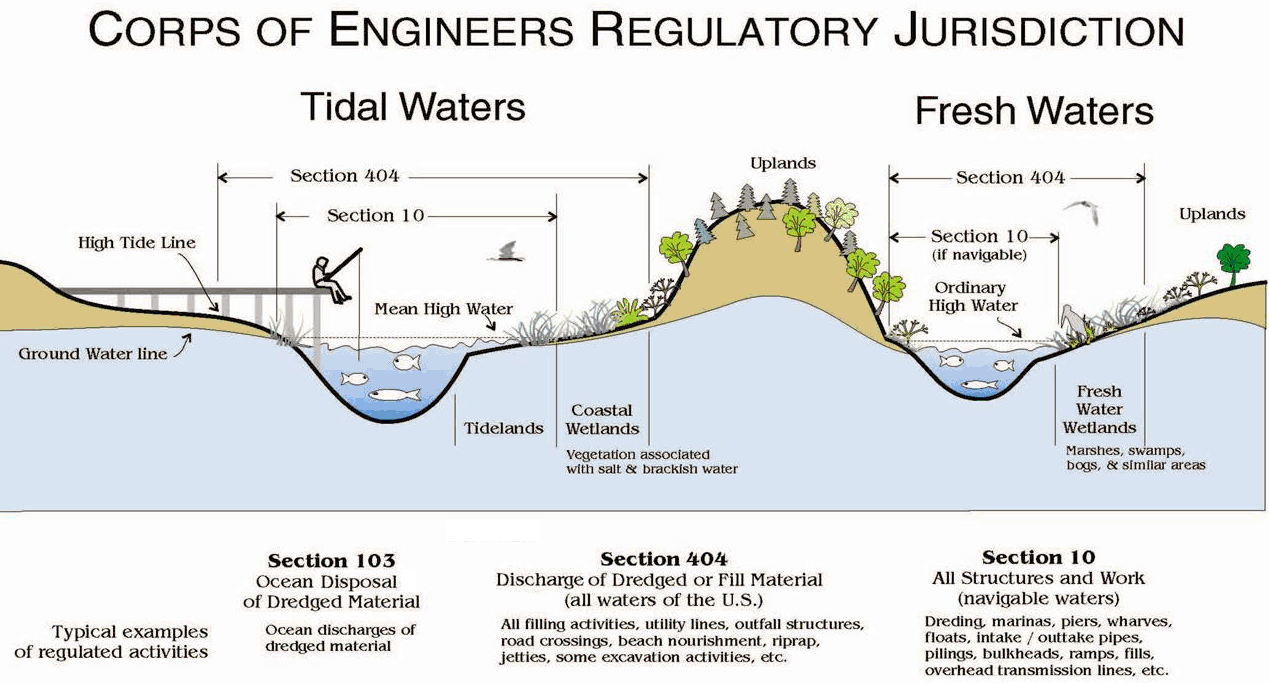The U.S. Army Corps of Engineers has permitting authority over activities affecting waters of the United States. Waters of the United States include surface waters such as navigable waters and their tributaries, all interstate waters and their tributaries, natural lakes, all wetlands adjacent to other waters, and all impoundments of these waters.
Two federal statutes mandate Corps jurisdiction over navigable waterways and adjacent wetlands. These are Section 10 of the Rivers and Harbors Act of 1899 and Section 404 of the Clean Water Act.
Collapse All Expand All

 Limits of Jurisdiction
Limits of Jurisdiction

- Territorial Seas. The limit of jurisdiction in the territorial seas is measured from the baseline in a seaward direction a distance of three nautical miles. (33 CFR 329.12)
- Tidal (Navigable) Waters of the U.S. The landward limits of jurisdiction in tidal waters:
- Non-Tidal Waters of the United States. The limits of jurisdiction in non-tidal waters:
- In the absence of adjacent wetlands, the jurisdiction extends to the ordinary high water mark, or
- When adjacent wetlands are present, the jurisdiction extends beyond the ordinary high water mark to the limit of the adjacent wetlands.
- When the water of the United States consists only of wetlands the jurisdiction extends to the limit of the wetland.

 Corps Regulations / Statutory Authorities
Corps Regulations / Statutory Authorities
The regulatory authorities and responsibilities of the Corps of Engineers are based on the following laws:
Other laws may also affect the processing and evaluation of applications for Corps of Engineers permits. Among these laws are the National Environmental Policy Act, the Coastal Zone Management Act, the Fish and Wildlife Coordination Act, the Endangered Species Act, the National Historic Preservation Act, the Federal Power Act, the Marine Mammal Protection Act, and the Wild and Scenic Rivers Act.